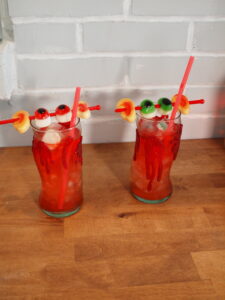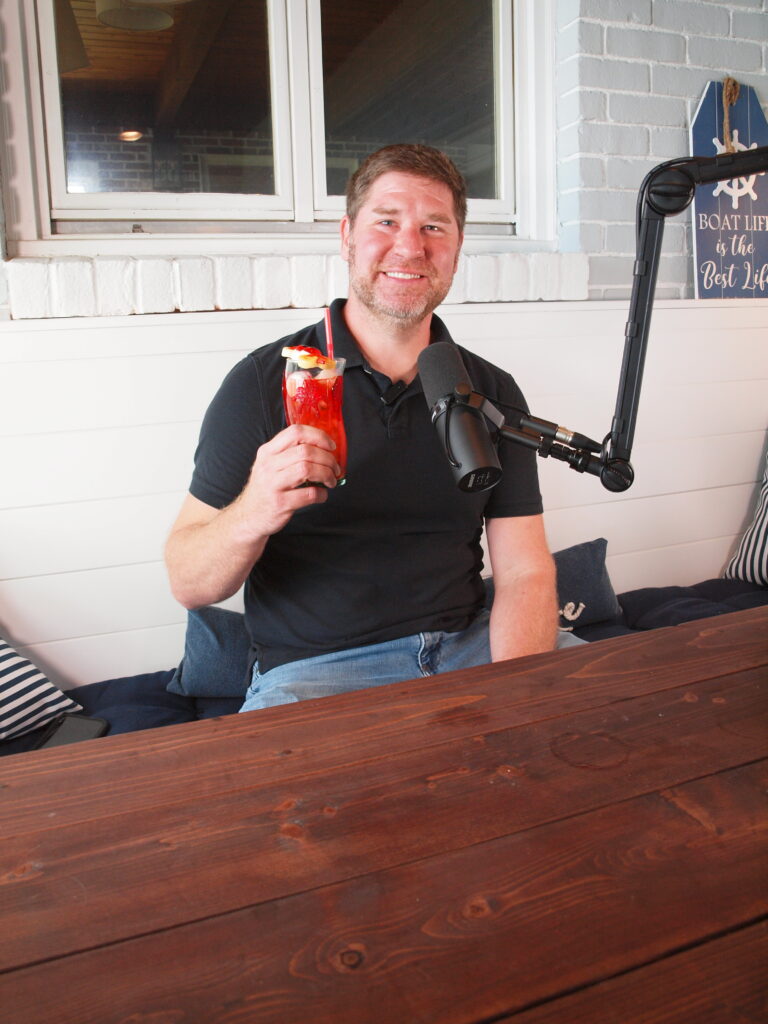
In the realm of mixology, the artistry of crafting cocktails extends beyond the ingredients and techniques; it encompasses the playful and imaginative naming of drinks. This concept is vividly illustrated in a recent podcast discussion where the hosts brainstormed names for a uniquely themed cocktail. Their conversation reveals how creative cocktail names can not only enhance the drinking experience but also spark joy and camaraderie among those partaking in the festivities.
The dialogue begins with the hosts contemplating names like “Bloodbath” and “Bloody Mule,” both of which evoke the playful yet macabre essence of the drink they are creating. The inclusion of humor and wordplay in these names highlights a crucial aspect of cocktail culture: the ability to engage and amuse. As one host notes, the drink is reminiscent of 80s and 90s slasher films, a theme that naturally lends itself to corny and tongue-in-cheek names. This playful approach to naming cocktails not only reflects the drink’s aesthetic but also invites patrons to embrace the fun and lightheartedness of the occasion.
The conversation also touches on the importance of visual appeal in cocktails, as one host mentions the use of gummies shaped like body parts to enhance the drink’s presentation. This attention to detail contributes to the overall experience, as the name of the cocktail becomes part of the narrative surrounding it. The hosts even consider the literary influences behind their drink, pondering names that pay homage to classic horror writers. This connection to literature adds depth to the cocktail’s identity, allowing guests to appreciate the drink on multiple levels.
As they continue to brainstorm, the hosts arrive at the clever name “Ear-y Mule,” a title that encapsulates both the drink’s spooky theme and its refreshing qualities. This moment exemplifies the collaborative spirit that often accompanies cocktail creation. The process of naming a drink can foster creativity and teamwork, encouraging participants to think outside the box and contribute their ideas. The resulting name not only serves as a conversation starter but also enhances the overall experience of enjoying the cocktail.
Moreover, the playful nature of cocktail naming reflects a broader cultural trend that values creativity and individuality. In a world where experiences are often curated for social media sharing, a unique cocktail name can become a memorable highlight of a gathering, prompting guests to share their experiences with others. The joy of discovering and savoring a cleverly named drink can transform an ordinary evening into a delightful celebration, reinforcing the idea that creativity in mixology is not just about taste but also about the stories we tell through our beverages.
Ginger Beer: A Beverage with a Hint of Alcohol
Ginger beer is often mistaken for a simple soda, but its unique production process sets it apart, giving it a slight alcohol content that intrigues many. In a recent podcast, the hosts delved into the distinctions between ginger beer and ginger ale, highlighting the fermentation process that ginger beer undergoes, which is responsible for its subtle alcohol presence. This fermentation not only contributes to the flavor profile of ginger beer but also adds an interesting layer to its classification as a beverage.
Unlike ginger ale, which is merely flavored with ginger and does not undergo fermentation, ginger beer is crafted through a process that involves fermenting ginger with sugar and water. This fermentation yields a small amount of alcohol, typically around 0.5%, which is comparable to that found in non-alcoholic beers. This slight alcohol content is often overlooked, as ginger beer is widely regarded as a non-alcoholic beverage, making it accessible to a broad audience. The podcast hosts noted that while this alcohol content is minimal and insufficient to produce intoxicating effects, it adds a fascinating dimension to the drink’s character.
The conversation about ginger beer also reflects a broader cultural context regarding how we perceive and consume beverages. The hosts mentioned that ginger beer evokes memories of college days, where colorful and flavored vodkas were popular. However, as individuals mature, there seems to be a shift in what is considered “cool,” particularly concerning brightly colored cocktails. This evolution in taste mirrors a larger societal trend where nostalgia for youthful experiences coexists with a desire for more sophisticated and nuanced flavors.
Moreover, the podcast underscores the connection between food and storytelling, particularly in the context of seasonal celebrations like Halloween. The hosts shared their experiences of preparing for the Halloween season, emphasizing the creativity involved in crafting engaging narratives around ghost stories and folklore. Just as ginger beer can be a playful addition to cocktails, the stories we share during festive times can evoke a sense of wonder and nostalgia, enriching our experiences and connections with others.ar-y
Pour ginger beer in a highball glass with ice, about 3/4 of the glass. Add lime juice, Aperol and Cherry UV. The red color of both Aperol and Cherry UV will look like ‘blood’ trickling down, a nod to the guest in which this cocktail was inspired by: Craig Groshek.

Garnish with candy eyeballs on a stick to keep with the spooky theme! Or, you can find Halloween-themed decals to put on the glass.
Amperitif Content
Resources
Location
Neenah, WI
©Talkwave, All rights reserved, Product by wpaper agency
By sharing your email address you agree to let us send you emails including news, updates, and promotions. We do not share email addresses with 3rd parties.